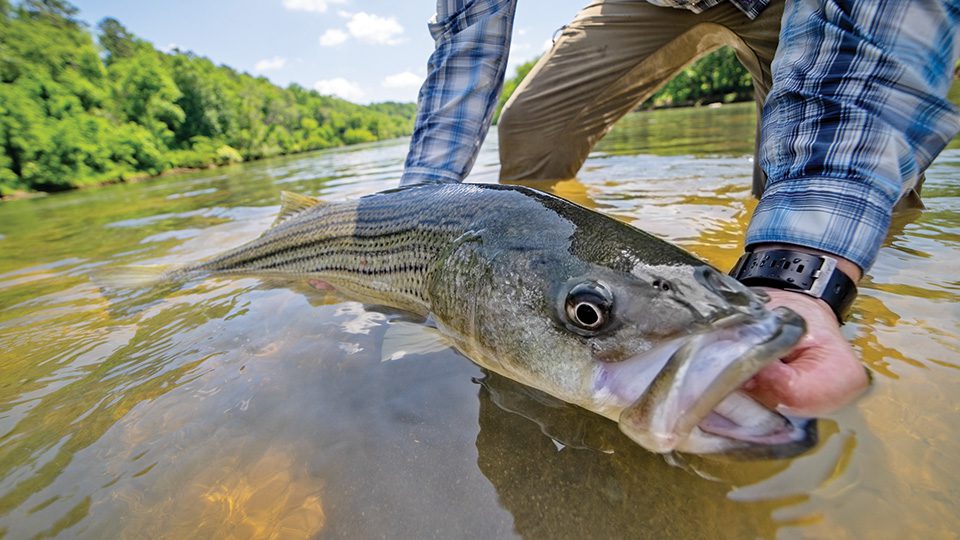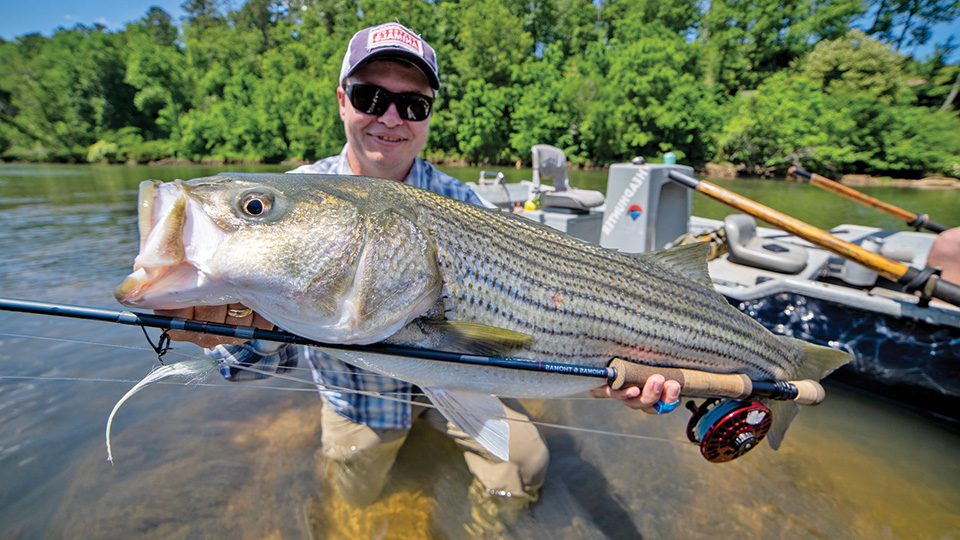By Cam Staff
Just like their saltwater brethren, “landlocked” striped bass in reservoirs across the country are highly mobile. Even restricted by dams, they retain the instinct to migrate, and this tendency leads to some of the most exciting fishing that exists.
When stripers run up rivers and creeks each spring and summer, anglers are likely to encounter very large fish in small waters. The fish come in waves, with an initial spring spawning run followed by a larger influx when summer heat pushes fish in search of thermal refuge.
Garner Reid, of Georgia’s Cohutta Fishing Company, has made it his life’s work to target big river-run stripers with a fly rod. Sure, he could catch them sinking cut bait, but it’s more fun to dance streamers around blowdowns in anticipation that a 20-plus-pounder might be waiting in ambush. The furious fights can be compared to those of big redfish, only they occur in a river, where current and cover work against the angler.
“If a big striper decides he’s going to wrap your line around a snag, there’s no way you’re going to stop it,” said Reid. “You’ve got to be a little lucky.”
Reid’s homewaters are Georgia’s Chattahoochee and Etowah rivers, but striped bass run in every system where they are present. The Caney Fork, the Hiwassee, the Cumberland, the Saluda, the list of Southeastern rivers with good striper runs is long. Reid has fished a lot of them and said the similarities are a reminder that striped bass are by nature a saltwater species.
“The amount of flow coming down the river dictates where you find fish,” he said. “Dam releases are like tides. High water is a large incoming tide. Just like in saltwater, the fish are pushing up as high as they can get.”
Striped bass become ambush predators in these “mountain tides.” In high water, they post up in creek mouths and on big blowdowns. When flows are low, they retreat to the depths in oxygen-rich holes below shoals. Their sensitivity to sunlight means they’re most likely to prowl in low light.
Reid said fish in ambush mode are more active. The fishing is faster, and floating or intermediate lines with un-weighted streamers can be worked relatively shallow. When stripers retreat to the depths, it’s sometimes necessary to break out sinking line and weighted streamers for a slow presentation fish can’t resist. With this need for versatility, Reid carries an arsenal of 8- to 10-weight rods rigged with floating, intermediate and full sinking lines.
Fly selection is determined by available forage. Popular streamers like Clousers, Deceivers and Half & Halfs fit the bill in sizes and colors to match natural baitfish. On a particular river, that might be a 2-inch threadfin shad or it might be a 9-inch rainbow trout.
Reid said bigger fish, which can weigh 20, 30, even 40 pounds, prefer larger baits. Even with a 10-weight fly rod, it’ll take some luck to get a fish like that to the boat.
Check out Cohutta Fishing Company at www.cohuttafishingco.com. Follow Garner Reid on Instagram and Facebook.

